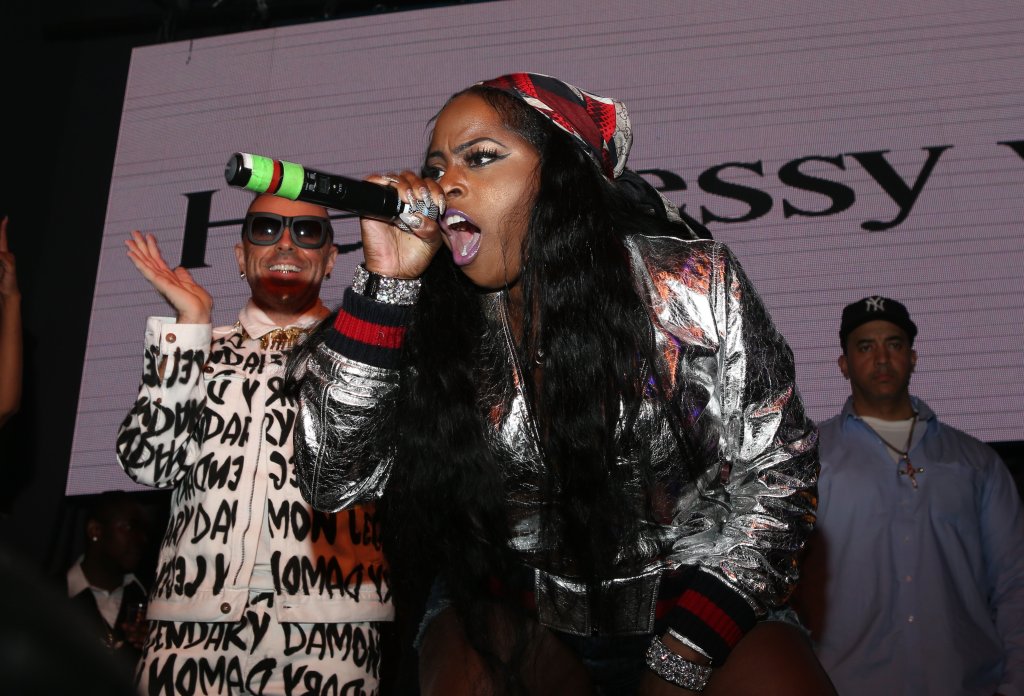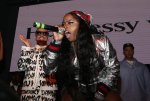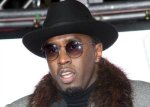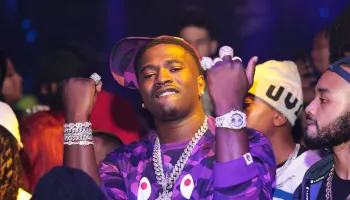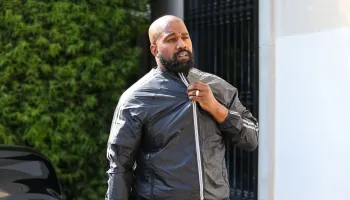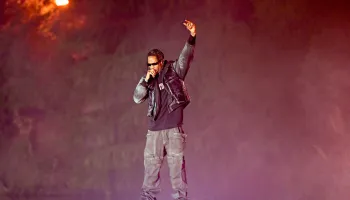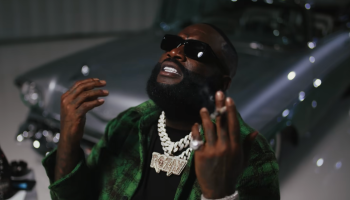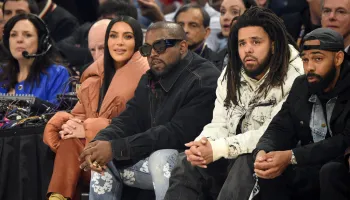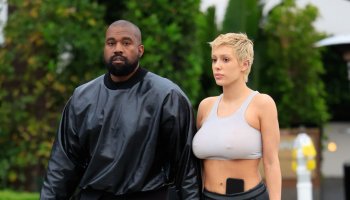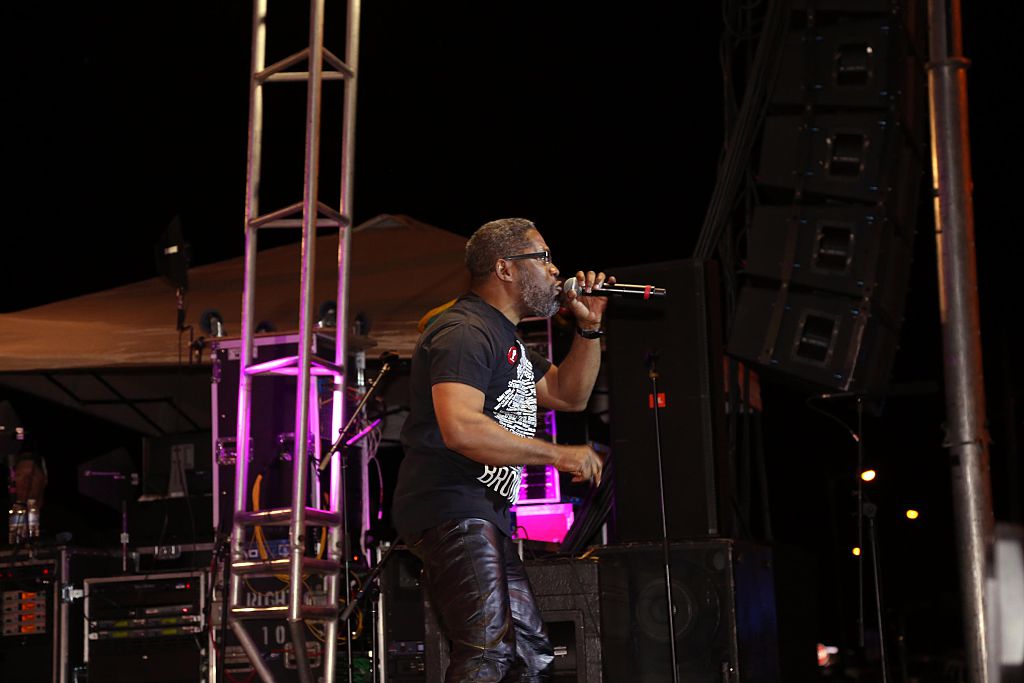
Source: Johnny Nunez / Getty
HipHopWired got the chance to talk to the legendary Daddy-O of Stetsasonic about the new Stop Self-Destruction Movement that he and Chuck D have launched to help the community deal with the rising issues of drug use and gun violence.
An unfortunate fact as Hip-Hop celebrates its 50th anniversary, is that the ills of violence and substance abuse still claw at the community. The deaths of rappers such as Young Dolph and Takeoff have lent emphasis to the situation. In the past, Hip-Hop banded together with the Stop the Violence Movement which resulted in the classic 1990 song, “Self-Destruction.” One of the prominent artists on that track was Daddy-O of Stetsasonic.
Over 20 years later, Daddy-O and Chuck D of Public Enemy have teamed up again to create the Stop-Self Destruction Movement with the aim of addressing the younger generation as they struggle to combat issues such as gun violence, police brutality, suicide and substance abuse. We had a chance to talk to Daddy-O at length about the movement, its aims and its future projects.
HipHopWired: As a pioneering artist and figure in Hip-Hop culture and a historian of the culture, you have been witness to so many seismic changes in Hip-Hop. And I think it’s definitely not an understatement to say that you’ve been a pioneering figure. So with that said, how vital is it to you now for the Stop Self Destruction movement to be getting underway as Hip-Hop celebrates its 50th anniversary?
Daddy-O: I think it’s extremely vital. I think primarily because we’ve known music to be a mechanism for change. So that happened prior to our existence and that’s no disrespect to us as Hip-Hoppers, right? But we’ve known music to have catalytic changes in life. We could talk about Songs in the Key of Life. We could talk about Marvin Gaye’s What’s Going On. We could even talk about Millie Jackson’s records, in terms of music actually being elemental and change. We look at what these mayors and all these cities are going through. And so there’s a lot of people talking, but not a lot is being done. But we know that music can move levers, right? We know that music can move mountains. So for us, Stop Self- Destruction is an aid to attack the ills that we see.
In the very beginning, when we did the first record, it was just violence. We never thought that we would be saying Hip-Hop and suicide in the same sentence ever. It was always about life. We never thought we would be talking about that. So all of these things we call or label self-destructive or self-destruction, we want to be the soundtrack for the people that are doing the real work. If it’s Warnock, good. If it’s Mayor Adams, good, but if it ain’t you I’m calling you out. Because I know Do It All is in the community doing stuff. I know that’s a fact. I know Ras Baraka is in the community doing stuff. All we want to do is put a supercharger on that and do it the way that we did it with the original record with today’s popular artists. Because that’s who these kids listen to. They will not be listening to no KRS-One, no Daddy-O, straight out. Now, if you combine us with some folks, then that’s a different story. If I could put Chuck D and Rick Ross on the record together, then it’s a different story.
That ties into my second question. With the development of the Stop Self-Destruction movement, how has the feedback been with you reaching out to artists that are contemporary?
So, we just started and it’s been great. We do have a record done already with Tobe Nwigwe, who’s a contemporary artist and it’s great. West Side Boogie is on that record. And he’s already made a record called “Self-Destruction.” So the response has been good, but we’re just starting to reach out to folks and figuring out, like, who to combine on what record, because part of the effort is getting some of the classic artists with some of the new artists. I do want to get the art together. I want to establish the mentorship more than art. So do I care if the old cats rap? No. But do I care if the old cats are talking to the Kodak Blacks and the Tee Grizzleys? Yes.
As far as the planning with the movement, similar to what we saw with the original Self-Destruction movement, will there be things like panel discussions?
I think one of the things I’m most excited about are these roundtables I’m going to do in these neighborhoods called “Gangsters and Grandmas.” I’m gonna put five or six people from the neighborhood around the table and have a conversation. Part of this movement is very therapeutic for what’s going on in our communities. Our communities are disconnected from conversation. I’m not blaming the internet, but I am saying that part of that is that. Lessons affect people to say what they want to say about what they were and who these kids were and all of that. But the gangbanger used to talk to the grandmother, and that community was intertwined. Everybody knew what everybody was doing. Now, she might have been on her knees nine hours a day praying for him. But they did talk at this particular point.
So part of this movement is very therapeutic in terms of putting people together so much more interested in those types of discussions but not adverse to and not exclusive to that. There will be some panels and those types of discussions with artists as well. But the truth of the matter is, I need artists to rhyme. I got enough professors. I got enough people that are doing the real work, people that are keeping these soup kitchens open, people that are doing financial literacy. These neighborhoods, they’re the ones that we need to hear from.
We do that with teens, with pregnancy. We do that with suicide. I’m gonna have contemporary rappers talk about pain because one of the things about contemporary rappers is that they’re all young. And a lot of people don’t understand that they’re not demons, and they’re being demonized. I mean, they might be doing some demonic sh*t. But they’re not demons. Part of my effort here is to not demonize the Kodak Blacks of the world and show you that that same heart that you got, he got. But he may not have access to you to have that conversation with you. So what else is he gonna do? What else are the little girls from Memphis gonna do? You can’t sit there and blame them. But one of the things you’re gonna hear Daddy say over and over is: if Young Thug is not my son, whose son is he? Not Kenny Rogers’ son, Bob Marley’s son. Not Bon Jovi’s son. But we’re absentee parents.
What I’m trying to say, because that’s what happened in Hip-Hop, is our absence. There’s nothing wrong with Hip-Hop except us. The fathers of this thing are us. And so that’s why it’s me. Because I could speak as the ’80s dude that made classics, that spits fire today and bring it up to date.
And that brings me to my last question – you mentioned naming and practicing within these different issues within the Hip-Hop community and our community as a whole. So being someone who’s essentially done that within the culture as a whole, what would be the one thing that you would encourage anybody in the older generation, newer generation to do from this point forward, as Hip-Hop goes into the next 50 years?
Interestingly enough, my advice is not any different than it was in the ’80s. My advice in the ’80s to everybody was to learn how to do everything. It doesn’t mean you’re going to become an engineer, doesn’t mean you’re going to become a producer. But if you know how to do everything, then nobody can pull the wool over your eyes. So that in itself creates ownership. Because a lot of what we see now, is because of the lack of ownership, right? The lack of ownership is what creates a lot of that kind of vacuum kind of thing that I’m talking about.
And that’s my little area. I don’t really care about the other stuff. I care about Hip-Hop. I care about the fact that we started off as a non-violent mechanism. The gangs in the Bronx made a truce. They started break dancing against each other. They started graffiti writing against each other, they start DJing against other, and rapping wasn’t even around in the beginning. But the point of the matter is that out of not wanting to do violence, the Black space then became something else. The Zulu Kings actually were a gang and became guys that were rapping and carrying equipment for Bambataa and Jazzy J. Fast forward and we’re actually 180 degrees reversed. Ninety percent of the rappers on the radio are talking gang talk. And I’m not talking about just affiliates I’m talking about in it.
The way we’ve been looked at is the same way when KRS came to the Stop The Violence Movement the first time. His whole aim was, “How are we being looked at?” Like we’re the ones causing it to happen. Here’s the ugly part about my movement: We actually now are the ones causing it to happen. So I’m in the middle of a different conundrum than him. You know, he had the benefit of having a Stetsasonic, a Public Enemy. I got to talk to cats that are really in the streets. I’m explaining to them how it’s just not cool. A lot of it comes from them being able to express their pain. Because that has been something that they just haven’t been able to do. Kodak talks about it, but they don’t. Most people don’t get Kodak so you don’t hear it. So my whole issue is to get them to be able to bleed the pain. Trippie Redd does it. But they’re not hearing it. Especially the adults. I want these adults to know what’s going on with these kids. Because my peers are wrong.
